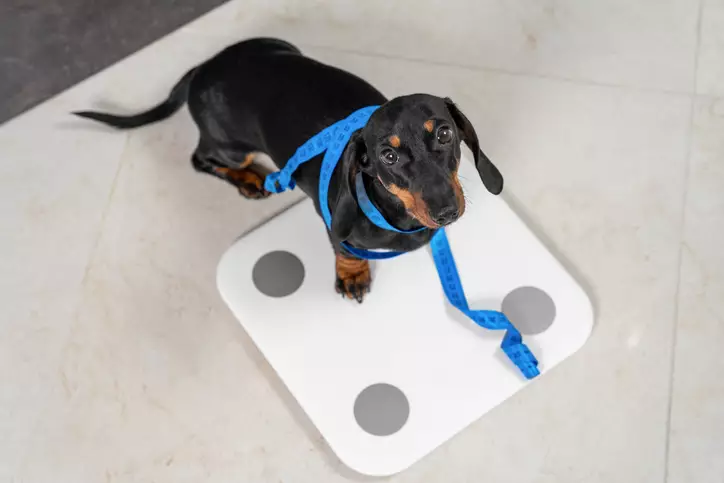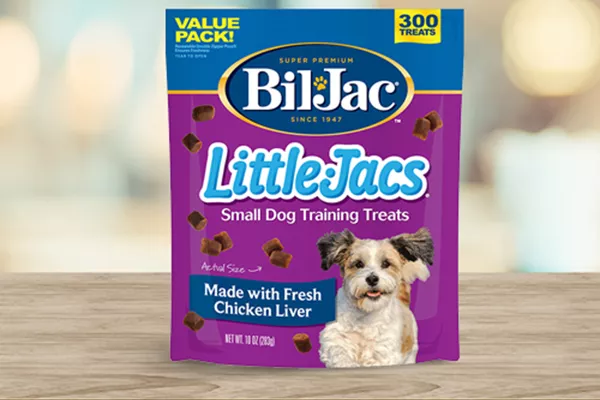2/6/2024
Dog Food 101: How Much to Feed a Puppy
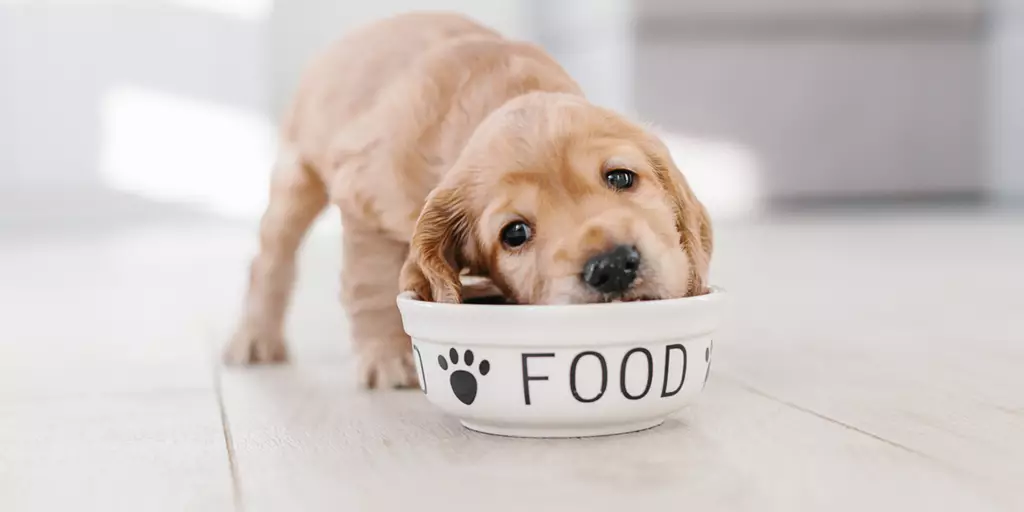
One of the most common questions new puppy parents have is how much they should feed their new best friend. As you may expect, the answer depends on your particular pup.
Every puppy is different and some will need more food to help them grow into strong, healthy adult dogs. Others may not need quite as many calories to keep them at a healthy, sustainable weight. Figuring out how much to feed a puppy, though, can sometimes feel like a mystery. Fortunately, there are plenty of ways you can figure out how much a puppy should eat.
How to Choose the Right Puppy Food?
Before you can decide on how much to feed your puppy, You’ll want to find a formula that caters to their unique nutritional needs. For example, Bichon Frise and Bernese Mountain Dog puppies grow at different rates and have very different dietary needs. You’ll want to make sure to choose a puppy food specially formulated for your puppy’s breed size.
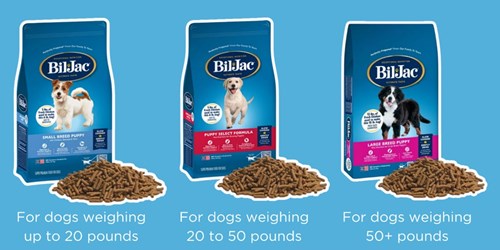
How Much Should a Puppy Eat?
Just like human babies, puppies require a lot of fuel to grow into happy, healthy pups. Since their bodies are changing so quickly, puppies can go through a lot of food in their first six months of life. The need for extra nutrition is why puppy formulas are specially packed with protein, vitamins, and minerals so that our little friends get everything they need to become big and strong healthy adults.
How Often Should I Feed My Puppy?
Of course, puppies have different feeding needs at different ages. This is especially true for really young pups who aren’t ready for food. Puppies do not normally start transitioning to solid food until they are at least 4 weeks of age, and should be eating dry food by 7 to 8 weeks of age.
Another factor to consider is that puppies have small stomachs. It can be hard for them to get all their proper nutritional needs out of one meal. In light of this, how often to feed a puppy really depends on their age. A good rule of thumb is that if they are under six months of age, you’ll want to split up their daily amount of food into three feedings spread out throughout the day.
Once your puppy is at least six months old, you can go from three feedings a day to only twice a day, dividing their daily amount of food between the two. They can stay on this twice a day feeding schedule as adults as well. This is particularly helpful for small breed dogs since some have a harder time balancing their energy and sugar levels when only fed once a day.
When Should I Feed a Puppy?
As to when these scheduled feedings should happen, that depends on you and your pup. For example, you could establish mealtimes at 7 a.m., 1 p.m., and 7 p.m. to space them apart nicely.
The timing largely depends on your personal preferences, but it’s important to stick with a schedule once you set it. Dogs are creatures of habit. Feeding on a regular schedule will help provide the security and predictability of mealtime, which in turn may help them not overeat.
Follow a Puppy Food Chart
While puppies do need special nutrition, it’s important to not go overboard on feeding. All dog foods are required to provide recommended feeding amounts on their packaging. These puppy food charts are based on the weight of your furry friend. For example, Bil-Jac Puppy Select offers the following recommendations:
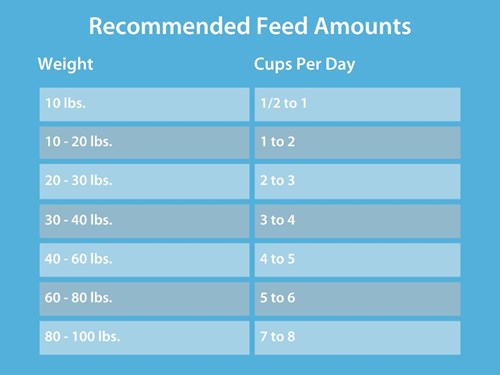
These guidelines are recommendations based on averages, but they will give you a good place to start – you should always monitor your puppy’s appetite and growth pattern and adjust their feeding amounts up or down to align with their body condition.
You should also note that not all dog foods have the same feeding recommendations. If you are using a super-premium puppy food like Bil-Jac, it will be packed with certain nutrients for your puppies needs such as protein, and potentially require smaller portion sizes than other brands.
How Can I Tell if My Puppy is Eating the Right Amount of Food?
When it comes to how much a puppy should eat, we agree with the American Kennel Club (AKC) suggestion, “Watch the dog, not the dish.”
The best way to determine if you’re dishing out the right amount of food is to monitor your puppy’s body condition. Food consistently left behind could be an indicator that you’re feeding your puppy too much, but a better gauge is to keep an eye on your their body as they grow.
While everybody loves a chubby puppy, your little furball should start to “thin out” a bit as they grow. If this doesn’t happen with your pup, you could be feeding them too much and setting them up for obesity and health problems in adulthood.
Indicators You're Feeding Your Puppy Too Much
There are a few different visual signs that can help you determine if your pup is eating the right amount of food. For starters, your dog should have a visible “waistline” when you look at them from above. From the side, their belly should not hang down lower than their chest – if it does, that’s a sign that you’re likely overfeeding your furry friend.
There are also some ways to see if your dog isn’t eating enough food. You should be able to feel your puppy’s ribs, but not see them. If your pup's ribs are visible, this could mean they aren’t getting enough nutrients and need a bigger serving size.
How Many Treats Can I Give My Dog?
It’s important to remember that treats are just that – treats. Some tasty treats are great for training your puppy or showing him some extra affection, but you shouldn’t spoil your little furball too much. The AKC recommends following the “10 percent rule,” which means that treats should make up no more than 10 percent of your four-legged friend’s diet. Fortunately, smaller treats like Bil-Jac Little Jacs can help you reward your pup without going overboard.
When Should I Switch My Puppy to Adult Dog Food?
The key to helping you know when to transition to adult food is your dog’s breed size. Smaller breeds typically reach their full size quicker than their larger friends do, so they should switch to adult dog food sometime between the ages of 10-12 months. Medium-sized breeds typically transition to adulthood around their first birthday. Meanwhile, large breeds can take anywhere between 12-18 months before they are fully-grown and are ready for adult dog food.
Our Best Advice – Relax and Enjoy Some Quality Puppy Time
Being a puppy parent is a big responsibility, but that doesn’t mean that you can’t enjoy every single minute with your best friend. If you follow these simple guidelines, you should be able to just relax and enjoy your newfound friend. Don’t stress too much about feeding your puppy — just use the suggestions above and have fun! It is our hope that you and your puppy will share many happy, healthy days to come.
Want to learn more about how you can help your puppy lead a happy, healthy life? Join the Puppy Club to receive exclusive puppy information and discounts on Bil-Jac products.


